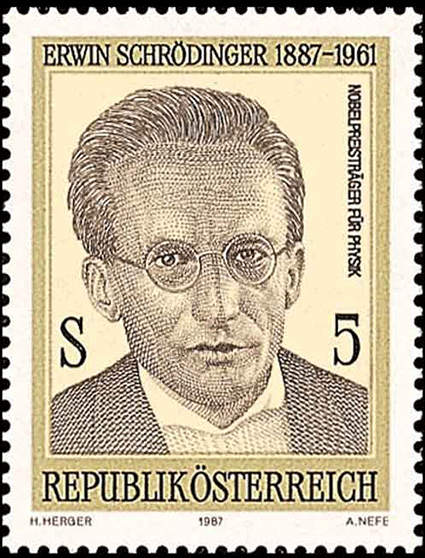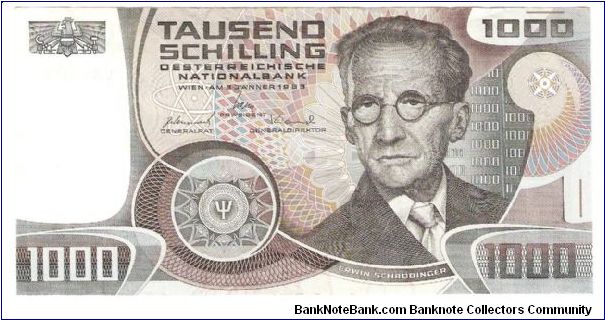
The Schrödinger’s cat is a thought experiment designed by Austrian physicist, Erwin Schrödinger, in 1935 to illustrate the paradoxical nature of quantum mechanics, which deals with particles of the minutest size (Please see notes at the bottom about quantum mechanics).
Here is a brief overview of the thought experiment:
Imagine a sealed box containing a cat, a radioactive source connected to a Geiger counter, a vial of poisonous gas, and a hammer. Governed by quantum rules, the radioactive atom can either decay or not at any given moment. And when it does decay, the Geiger counter detects the associated radiation and activates the hammer to break the vial, releasing the poison and killing the cat.
According to quantum mechanics, the radioactive atom is in a superposition of states: both decayed and undecayed at the same time (until observed). Superposition is the ability of a quantum system to be in multiple states at the same time until it is observed/measured.
Since the cat’s fate is tied to the atom’s state, the cat is also in a superposition of states: both dead and alive at the same time. This seems absurd and paradoxical, as we can’t imagine a cat being both dead and alive at the same time!
The Schrödinger’s cat thought experiment highlights the strange implications of applying quantum mechanics to macroscopic objects. It illustrates the concept of superposition in quantum mechanics. And also raises questions about the role of observation in collapsing the wave function (i.e., the act of measurement affecting reality).
The thought experiment has become an iconic representation of the weirdness of quantum systems, inspiring discussions and deliberations about the nature of reality and measurement. Through this, Schrödinger’s aimed to demonstrate the seemingly absurd consequences of applying quantum mechanics to everyday objects. He wanted to stimulate discussion and clarify the interpretation of quantum mechanics.
Image: Austrian postage stamp on Erwin Schrödinger issued in 1987. Courtesy https://rooschristoph.blogspot.com/
Philosophical implications
Schrödinger’s cat has significant philosophical implications too, and has sparked debates and interpretations that extend beyond physics. Some key philosophical angles include:
Reality and observation: Does the cat’s fate depend on observation, or is its state determined regardless of observation? This raises questions about the role of observation in shaping reality.
Superposition and identity: If the cat is both dead and alive, what does this mean for our understanding of identity and existence?
Probability and uncertainty: Schrödinger’s cat highlights the inherent uncertainty principle in quantum mechanics, challenging our classical notions of determinism and predictability.
Consciousness and Measurement: Does the act of observation require consciousness, or can any measurement device collapse the superposition?
Many-worlds interpretation: This thought experiment supports the idea that every possibility branches into a separate universe, raising questions about the nature of reality and our place within it.
Limits of language: Schrödinger’s cat pushes the boundaries of language, forcing us to confront the limitations of describing quantum phenomena using classical concepts.
Philosophy of science: This thought experiment challenges our understanding of scientific inquiry, highlighting the tension between theoretical models and empirical reality.
Schrödinger’s cat has become a cultural icon, symbolising the strange implications of quantum mechanics and inspiring philosophical discussions about reality, observation, and the human experience.
About Schrödinger

The contributions of Erwin Schrödinger (1887-1961) to physics and beyond are immense. He was awarded the Nobel Prize in Physics in 1933 for his seminal work on quantum mechanics. Schrödinger equation, describing the time-evolution of a quantum system, is central to the development of quantum mechanics. Other key contributions of Schrodinger include the Uncertainty Principle and the concepts of wave-particle duality, superposition, quantum entanglement, etc..
Schrödinger’s work revolutionised our understanding of the atomic and subatomic world, paving the way for countless scientific and technological advancements. His legacy extends beyond physics, influencing philosophy, biology, and our understanding of the natural world.
Image: A 1000 shillings note honouring Dr. Erwin Schrödinger issued by Austria in 1983. Courtesy https://www.banknotebank.com/
About Quantum mechanics
Quantum mechanics is a fundamental theory in physics that describes the behaviour of matter and energy at the smallest scales, such as atoms and subatomic particles. It provides a new and unique perspective on the physical world, challenging our classical understanding of reality.
Here are the key principles of quantum mechanics:
- Wave-particle duality: Subatomic particles, like electrons, can exhibit both wave-like and particle-like behaviour.
- Uncertainty principle: Certain properties, especially of subatomic particles, like position and momentum, cannot be precisely known at the same time.
- Superposition: Subatomic particles can exist in multiple states simultaneously.
- Entanglement: Particles can be connected, instantaneously affecting each other, regardless of distance.
- Quantisation: Energy moves in discrete packets (called quanta) rather than being a continuous flow.
Quantum mechanics has led to numerous breakthroughs and applications, including:
- Transistors and semiconductors
- Lasers and optics
- Computer chips and electronics
- Magnetic Resonance Imaging (MRI)
- Quantum computing and cryptography
Quantum mechanics continues to shape our understanding of the universe, pushing the boundaries of knowledge and innovation.
A Geiger counter (also Geiger-Muller counter) is an electronic instrument used for detecting and measuring ionising radiation. It is widely used in applications such as radiological protection, experimental physics and the nuclear industry.
I
